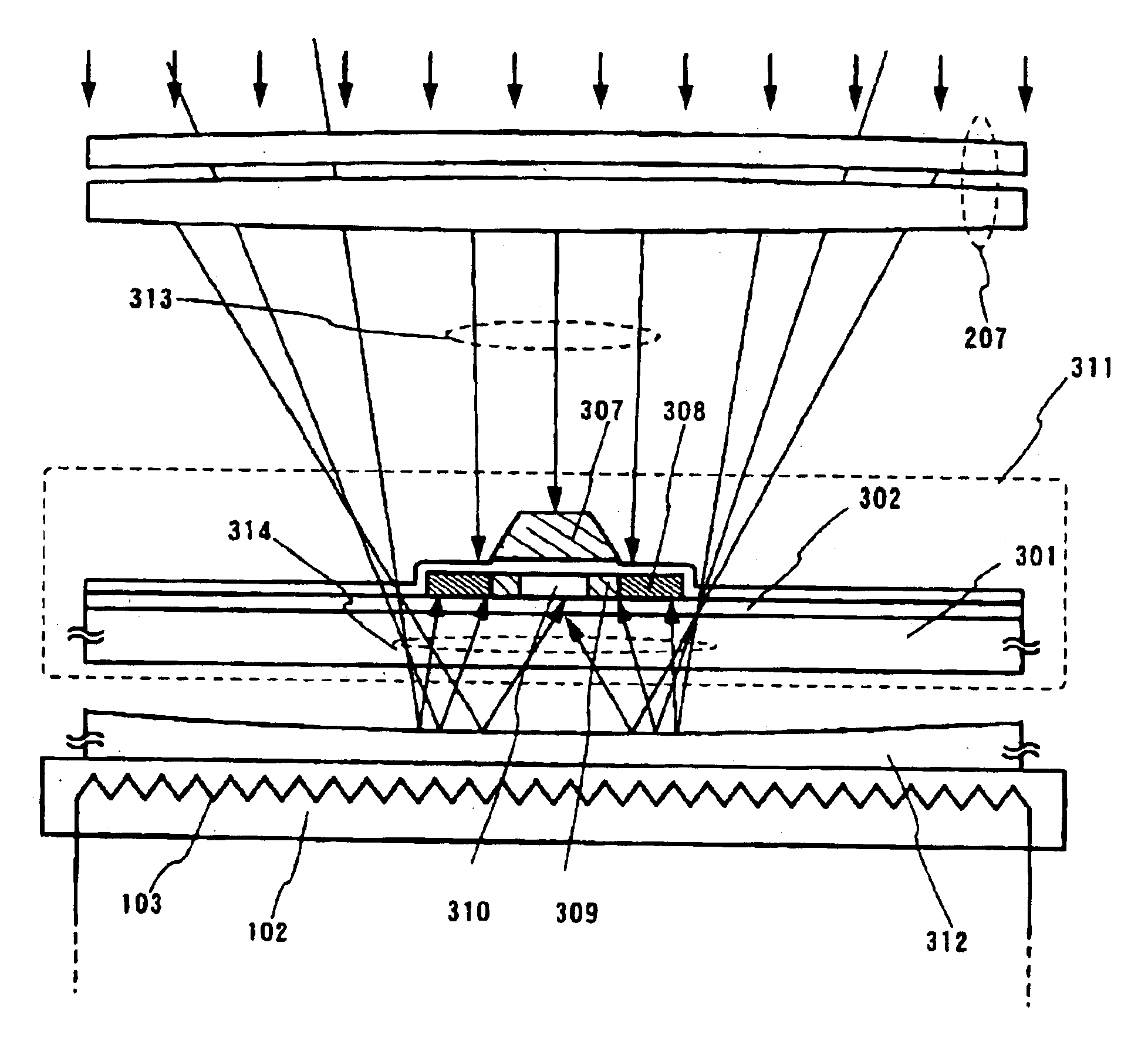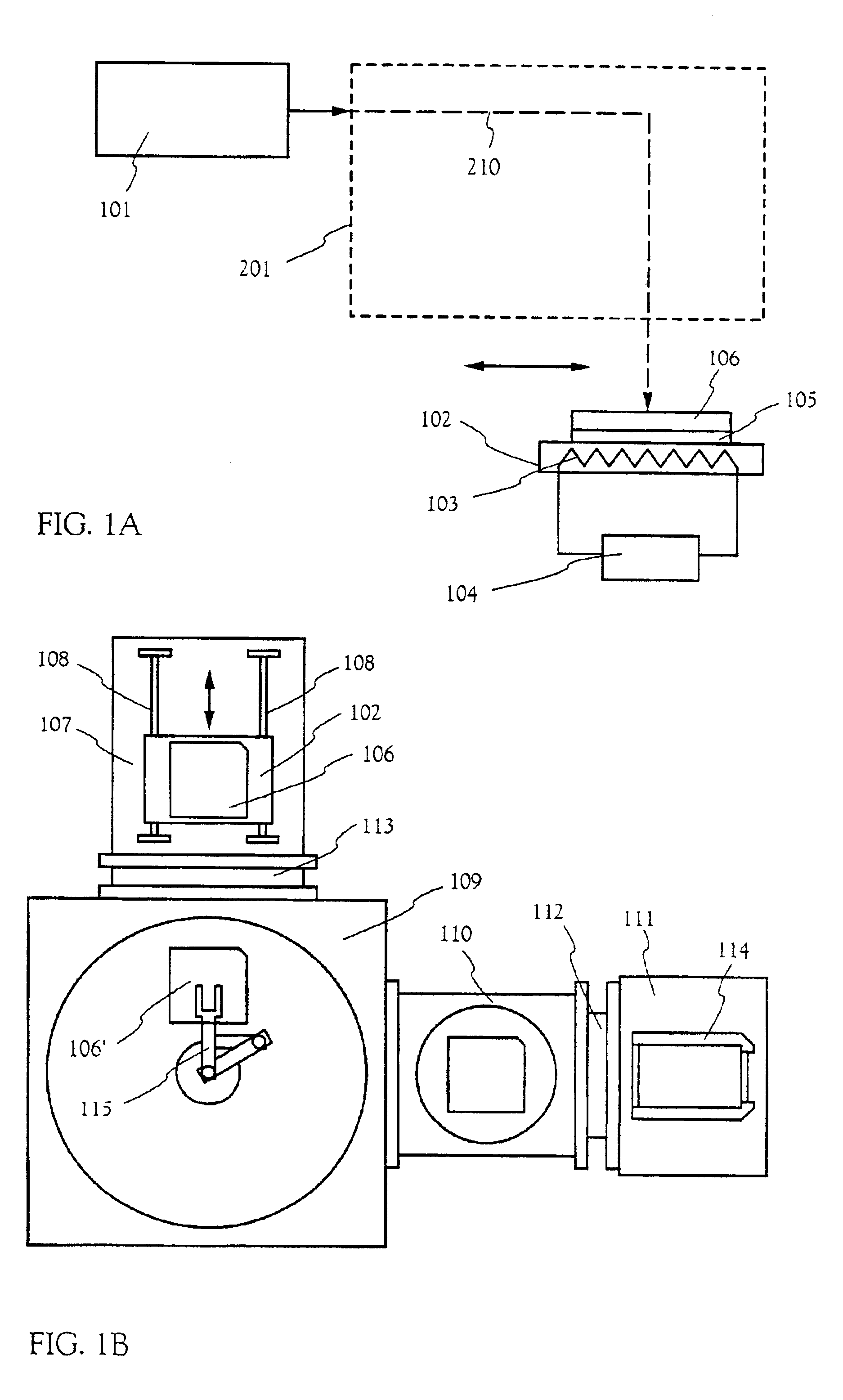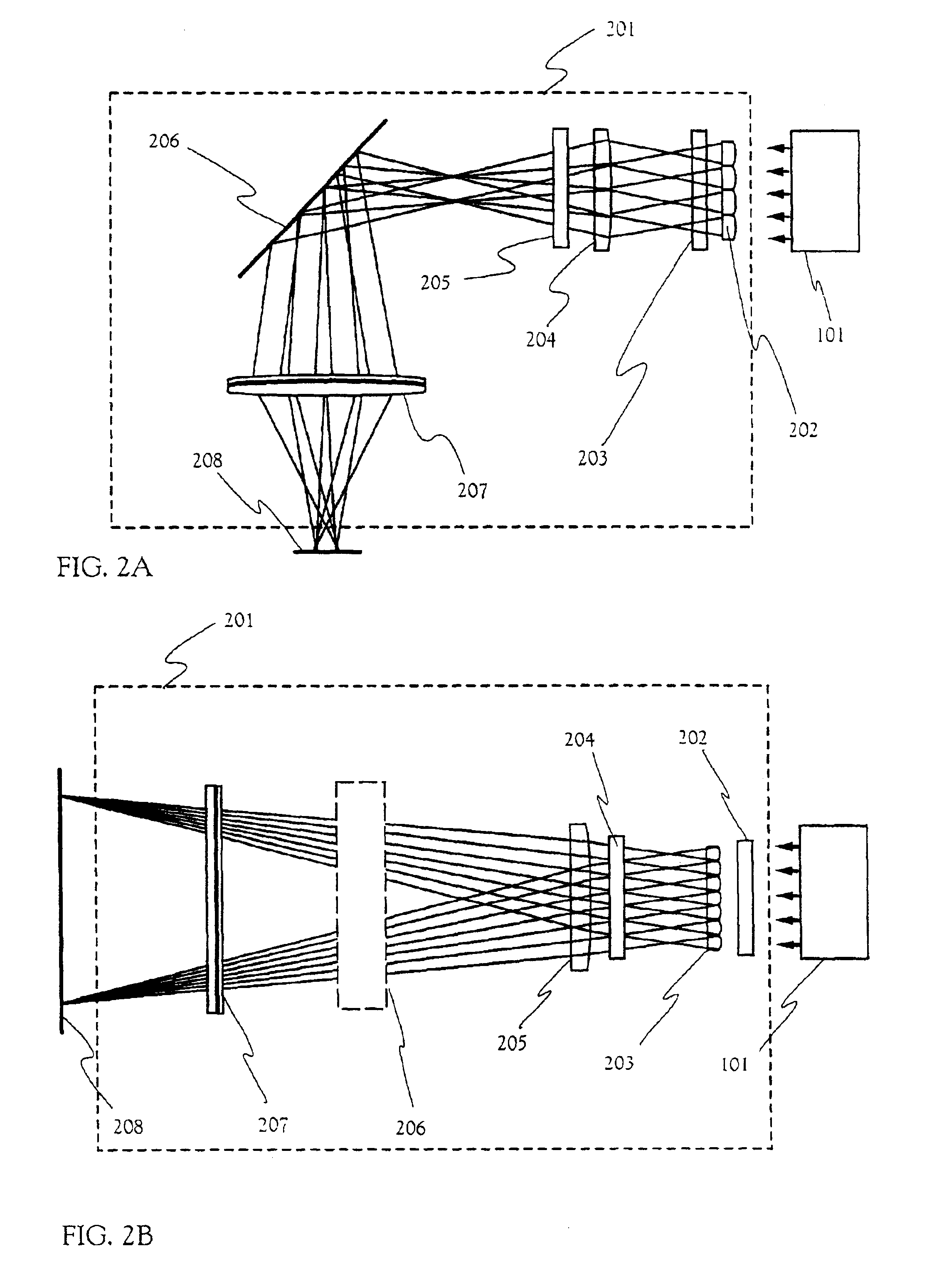Method of making a thin film transistor using laser annealing
a thin film transistor and laser annealing technology, applied in the field of semiconductor devices, can solve the problems of deterioration of the stability and reliability of the tft characteristic, the inability to reduce the price to a level practical for industrial use, and the long heating time of 20 hours for a mass production process
- Summary
- Abstract
- Description
- Claims
- Application Information
AI Technical Summary
Benefits of technology
Problems solved by technology
Method used
Image
Examples
embodiment 1
[Embodiment 1]
An embodiment of the present invention will be described. FIG. 1A shows a structure of a laser irradiation apparatus. This laser irradiation apparatus has a laser oscillator 101, an optical system 201 for linearly processing laser light 210 (preferably, the second harmonic) from the laser oscillator 101 as an oscillation source, and a stage 102 for holding a translucent substrate. A heater 103 and a heater controller 104 is provided in the stage 102 and thus the substrate can be heated at 100.degree. C. to 450.degree. C. Also, a reflector 105 is provided on the stage 102 and a substrate 106 on which a semiconductor film is formed is located thereon.
Note that, when the laser light outputted from the laser oscillator 101 is to he modulated to the second harmonic or the third harmonic, a wavelength modulator including a non-linear element may be provided immediately after the laser oscillator 101. In this embodiment, an Nd:YAG laser is used as the laser oscillator 101 and...
embodiment 2
[Embodiment 2]
In this embodiment, the case where laser annealing is performed for a semiconductor film substrate obtained through manufacturing steps different from Embodiment 1 will be described.
Here, a method of performing steps until the gate electrode of the TFT is formed will be described using FIGS. 7A to 7D. First, the state shown in FIG. 4A is obtained in accordance with Embodiment 1. Note that a state shown in FIG. 7A is the same state as in FIG. 4A.
Then, first thermal treatment is performed to crystallize a semiconductor film. Since the heating time and the heating temperature are dependent on the semiconductor film and the metallic element to be added, those are preferably determined as appropriate by an operator. In this embodiment, the semiconductor film is exposed at 550.degree. C. in an nitrogen atmosphere for 4 hours.
Successively, a mask 755 is formed and first doping processing is performed to selectively introduce an impurity element into the semiconductor film. Ac...
embodiment 3
[Embodiment 3]
In this embodiment, the case where laser annealing is performed for a semiconductor film substrate obtained through manufacturing steps different from Embodiment 1 and Embodiment 2 will be described.
Here, a method of performing steps up to formation of the gate electrode of the TFT will be described using FIGS. 20A-20D. First, the state shown in FIG. 4A, in which a semiconductor film 302 is formed, is obtained in accordance with Embodiment 1. Note that the same reference numerals are used in FIG. 20A for the parts corresponding to those in FIG. 4A.
An insulating film including silicon such as a silicon oxide film or a silicon oxynitride film (SiOxNy) is formed as an insulating film 770 having an opening by a known process (sputtering method, LPCVD method, plasma CVD method, or the like). Then, a metallic element for promoting crystallization is added to form a metallic containing layer 771. Plasma processing, evaporation, a sputtering method, ion implantation, solution ...
PUM
| Property | Measurement | Unit |
|---|---|---|
| wavelength | aaaaa | aaaaa |
| distortion point temperature | aaaaa | aaaaa |
| distortion point temperature | aaaaa | aaaaa |
Abstract
Description
Claims
Application Information
 Login to View More
Login to View More - R&D
- Intellectual Property
- Life Sciences
- Materials
- Tech Scout
- Unparalleled Data Quality
- Higher Quality Content
- 60% Fewer Hallucinations
Browse by: Latest US Patents, China's latest patents, Technical Efficacy Thesaurus, Application Domain, Technology Topic, Popular Technical Reports.
© 2025 PatSnap. All rights reserved.Legal|Privacy policy|Modern Slavery Act Transparency Statement|Sitemap|About US| Contact US: help@patsnap.com



